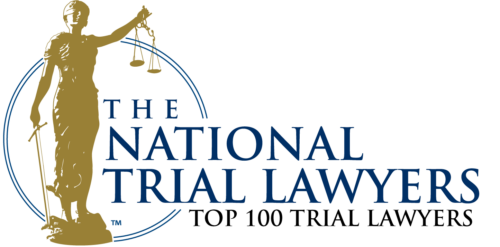At The Reiff Law Firm we are dedicated to fighting for those who are seriously injured due to the recklessness or carelessness of another person or company. Part of our commitment is expressed through informing Pennsylvanians of major changes to personal injury law in Pennsylvania that will affect their legal rights should they be seriously injured. We had previously discussed the rather unsettled state of product liability law in a September blog post discussing the liability schism between Pennsylvania’s approach to the Second Restatement and the mainstream approaches to the Second & Third Restatements.
Recently the Pennsylvania Supreme Court announced its long-awaited decision in Tincher v. Omega Flex. The remainder of this post will examine the standard that was announced by the Court.
What Was The Legal Standard For Product Liability Actions In Pennsylvania Previously?
Previously, the governing standard for product liability actions in Pennsylvania was Azzarello v. Black Bros. Co., 391 A.2d 1020 (Pa. 1978). The standard was a unique and independent approach to the standard for strict liability set forth in the Second Restatement of Torts. Without belaboring the point made in the previous post, the Azzarello formulation of the strict liability standard removed the “unreasonably dangerous” requirement from the provenance of the jury because of a view that considerations of reasonableness are inappropriate in a strict liability inquiry. Many critics of the Azzarello approach remarked that it, in essence, required a manufacturer to insure against injuries caused by the good. However, the newly announced Tincher decision expressly overrules Azzarello.
New Product Liability Standard Is Announced by Pennsylvania Supreme Court
The Pennsylvania Supreme Court declined to adopt the Third Restatement and rather held that the standard that a plaintiff pursuing a cause upon a theory of strict liability in tort must prove is that the product is in a “defective condition.” Tincher v. Omega Flex, Inc., No. 17 MAP, slip op. (Pa. Nov. 19, 2014). The court states that the means of proving a defective condition should not be applied rigidly or mechanically, but rather, “..contour the notion of “defective condition” in principled terms intended as comprehensive guidelines that are sufficiently malleable to account for product diversity and a variety of legal claims, products, and applications of theory.” Id. at 132.
A plaintiff may prove that a product is in a defective condition in one of two ways. First, the plaintiff may prove that the danger is, “unknowable and unacceptable to the average or ordinary consumer.” Id. at 95. Alternatively, the plaintiff may prove that “a reasonable person would conclude that the probability and seriousness of harm caused by the product outweigh the burden or costs of taking precautions.” Id. at 98.

Additionally, the Court held that whether a product is in a defective condition is a determination that is typically one to be made by the jury who is the finder of fact. However, if it is clear that reasonable individuals could not disagree, then the determination may be removed from the jury’s purview. The court retains its traditional role of determining questions of law including dispositive motions, jury instructions, and the governing legal theory.
What Are The Practical Effects Of This New Strict Liability Standard?
Pennsylvania’s Supreme Court, once again, asserted its independent streak by declining to adhere to the Third Circuit’s prediction that it would adopt the Third Restatement. Rather, what the Court essentially did in announcing its standard, is that it developed an alternative approach to the Second Restatement. How one would characterize this approach likely depends on one’s position. While the Court and defense attorneys may characterize this new standard as being a “properly calibrated” version of the Second Restatement, plaintiffs’ attorneys would simultaneously correctly characterize it as a more defendant-friendly decision than Azzarello was. There is truth in both characterizations.
The newly announced standard is something of a synthesis of the risk-utility test and the consumer expectations test that draws on Pennsylvania’s historical approach and the Third Restatement. The Tincher approach eliminates the Azzarello approach of a product supplier having absolute liability as a guarantor of its product’s safety. Rather the Tincher approach makes the plaintiff the master of his or her claim by providing two alternate theories to prove that a product is “unreasonably dangerous”. Id. at 130.
However, a number of pro-plaintiff practices will no longer be the law in Pennsylvania. These practices include:
- The pre-trial procedure for determining whether a product is “unreasonably dangerous” as a matter of law is no longer the law in Pennsylvania.
- The new approach dispenses with the strict dichotomy between negligence and strict liability that was rather plaintiff-friendly and rather recognizes that “the theory of strict liability as it evolved overlaps in effect with the theories of negligence and breach of warranty.” Slip op. at 121.
- The pro-plaintiff jury instructions which read, “The supplier of a product is the guarantor of its safety. The product must, therefore, be provided with every element necessary to make it safe for its intended use, and without any condition that makes it unsafe for its intended use,” is no longer a viable jury instruction. The elimination of the language requiring “every element necessary to make it safe” will likely create a heightened burden for plaintiffs.
One of the chief concerns of the court in announcing this new standard was to avoid what the court termed a lack of “judicial modesty” when Azzarello was decided. The court writes, “This case speaks volumes to the necessity of reading legal rules – especially broad rules — against their facts and the corollary that judicial pronouncements should employ due modesty.” Id. at 79. As the Court describes, this lack of judicial modesty resulted in an impractical standard that courts were not equipped to handle. Furthermore, drawing such board principles from narrow facts resulted in subsequent cases, “elevat[ing] the notion that negligence concepts create confusion in strict liability cases to a doctrinal imperative.” However, the court noted that the merits of the notion, “were not examined to determine whether such a bright-line rule was consistent with reason in light of the considerations pertaining to the case.”
In many ways, it isn’t totally clear exactly what will replace Azzarello, but the composite standard announced by the court in Tincher will inform the broad outlines of the standard. However one can expect the courts to take a more measured approach to its pronouncements of rules and a less formulaic approach. Furthermore, and unfortunately, the victims of a defective product can expect a more difficult road to recovery due to the adoption of a more defendant-friendly framework.
Related Posts
- What if I Waited Too Long to See a Doctor After a Car Accident in Pennsylvania?
- How Long Do Product Liability Cases Take in Pennsylvania?
- Can You Sue for Injuries that Occur at a Camp in Pennsylvania?
- How Do You Collect Payment for Medical Bills After an Accident in Pennsylvania?
- Do Insurance Companies Get Footage from Traffic Cameras in Philadelphia?















